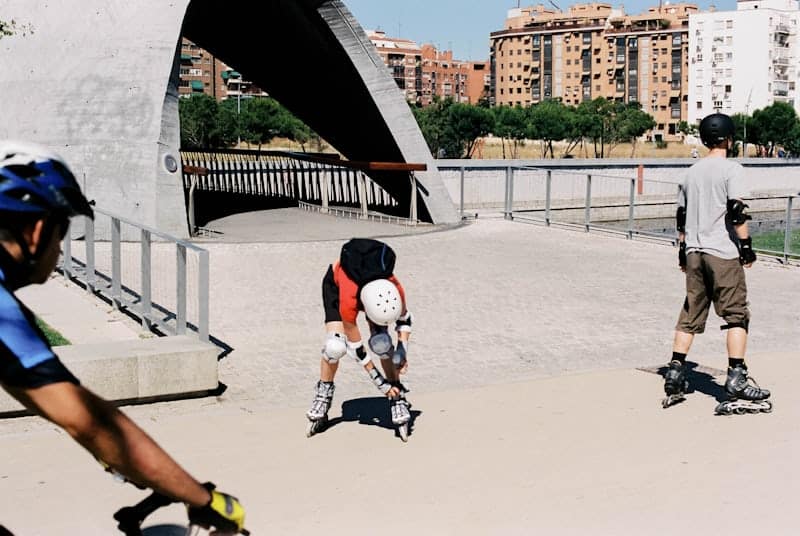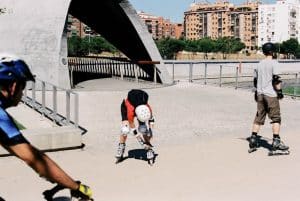The Science of Roller Skating: Understanding the Physics Behind the Fun
Roller skating is not just a fun recreational activity; it’s also a fascinating display of physics in action. The combination of momentum, friction, and balance plays a critical role in the experience of skating, making it not only enjoyable but also a compelling subject for scientific exploration. Let’s dive into the science behind roller skating […]

Roller skating is not just a fun recreational activity; it’s also a fascinating display of physics in action. The combination of momentum, friction, and balance plays a critical role in the experience of skating, making it not only enjoyable but also a compelling subject for scientific exploration. Let’s dive into the science behind roller skating and discover how these concepts come together to create the exhilarating experience we love.
 Momentum: The Force That Keeps You Rolling
Momentum: The Force That Keeps You Rolling
Momentum is the product of an object’s mass and its velocity, represented by the equation:
Momentum = Mass x Velocity
When a skater pushes off the ground, they generate momentum. The harder and faster they push, the more momentum they gain. This force allows the skater to glide smoothly across the rink or pavement.
In roller skating, maintaining momentum is essential for keeping speed and fluidity. For instance, when skaters are moving at a steady pace, they can conserve energy, making it easier to navigate turns and maintain balance. However, when they slow down or stop, they must exert more energy to regain their speed.
Friction: The Balancing Act
Friction is the force that resists the motion of one surface sliding over another. In roller skating, two types of friction come into play:
- Static Friction: This is the friction that prevents the skates from sliding when at rest. It keeps the skater stable as they prepare to push off.
- Kinetic Friction: This occurs when the skater is in motion. The wheels of the skates create kinetic friction with the surface, allowing for smooth gliding. However, too much friction can slow the skater down, so finding the right balance is crucial.
The material of the skating surface (wood, concrete, or asphalt) and the type of wheels being used also influence friction. Softer wheels provide more grip and absorb shocks better, making them suitable for rough surfaces, while harder wheels glide more easily on smooth surfaces but may offer less traction.
Balance: The Key to Staying Upright
Balance is fundamental to roller skating. Skaters must constantly adjust their body position to maintain equilibrium, which involves shifting their weight and using their core muscles. The center of gravity plays a significant role in this process.
When skating, a skater’s center of gravity is typically located near their waist. Leaning forward or backward alters this center, affecting stability. To stay upright, skaters often adopt a low, bent-knee position, which lowers their center of gravity and enhances balance. This position also allows for quick adjustments when encountering obstacles or changes in terrain.
Angular Momentum: Twirling Into Action
Angular momentum is another key concept in roller skating, especially when it comes to turns and spins. When a skater spins, they conserve angular momentum, which helps them maintain their speed and direction.
The equation for angular momentum is:
Angular Momentum = Moment of Inertia x Angular Velocity
As skaters pull their arms in while spinning, they decrease their moment of inertia, allowing them to spin faster without losing balance. This principle is why figure skaters appear to twirl effortlessly, and it applies to roller skaters as well.
The Joy of Roller Skating: A Harmonious Blend of Science and Fun
Understanding the science behind roller skating not only enhances our appreciation for the activity but also provides insights into improving technique and performance. Whether you’re gliding gracefully around a rink or performing daring tricks, the physics of roller skating is at play, making the experience even more thrilling.
So the next time you strap on your skates and hit the rink, take a moment to appreciate the incredible interplay of momentum, friction, and balance that allows you to glide, spin, and dance with ease. Roller skating is truly a beautiful blend of science and fun, inviting skaters of all ages to enjoy the magic of movement!
What's Your Reaction?











































